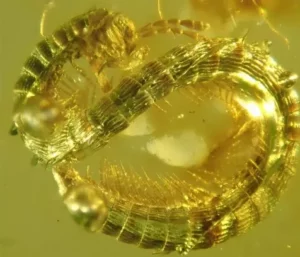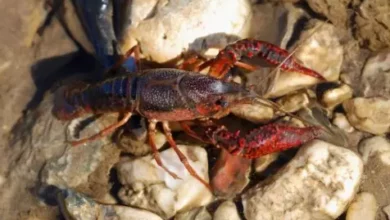99-million-year-old millipede discovered in Myanmar amber
They have discovered a new species of millipede 99 million years old trapped in Burmese amber (or rather, from Myanmar which is the current official name of the territory). They have named it Burmanopetalum inexpectatum , Burmanopetalum for its Burmese origin (-petalum because it is common in millipede species) and inexpectatum for being unexpected.

The discovery has been made thanks to a private collection of Patrick Müller that is now in the A. Koenig museum in Bonn, Germany. It is not the first time that private or museum collections reveal new species or discoveries.
The surprising thing about the find is its size , barely 8.2 millimeters of a female tiny millipede, which has broken into the systematic classification creating its own suborder within the Callipodida order and being the first fossil millipede known of this order.
All this has been possible thanks to the use of 3D X-ray microscopy that have managed to make a 3D simulation of the bug in question. Thus, it has been possible to obtain great detail making it possible to decipher the evolution that this group has had. Its general appearance has not changed much but in detail they show significant differences that make it fall into the new suborder: Burmanopetalidea and therefore a new family Burmanopetalidae.
The key differences of this new species of millipede
It differs from existing Callipodida species by its minute size (less than 1 cm in length), the lack of pleurotergic setae, and its spatulate telson being twice the size of the penultimate body ring.
In addition, the eyes are made up of five ommatidia while the rest have between 2 and 3 ommatidia.
This is the 3D model of this new species:
Millipedes
Millipedes are included within the phylum Arthropods, subphylum Myriapods (along with centipedes) in the class Diplopoda which currently has 11,000 known species although according to some studies they could reach up to 80,000 species to be known. The first fossils found date back 420 million years, found in Scotland, it is considered that they were the first animals to conquer the earth.
They are very important in ecosystems since they play a fundamental role as degraders in terrestrial ecosystems since the Silurian.




